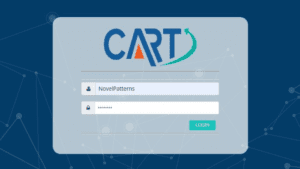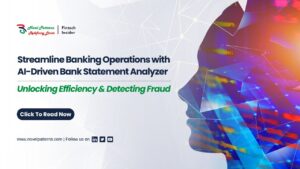Understanding credit underwriting and how its assessment has changed in the age of automation?
Banks and other lending institutions will often use credit underwriting to assess customers’ financial capability before approving or rejecting them for a loan or credit card. Although the practice itself isn’t too difficult to understand, there are many elements of credit underwriting that can be puzzling and sometimes even intimidating if one doesn’t know what to expect.
This article will give you some helpful insight into this practice and how it’s evolving in the age of automation.

What is credit underwriting?
Credit underwriting is simply a process of taking personal, financial, and/or business information, analyzing it for what it says about one’s ability to repay loans or other debts, and then accepting or rejecting that person for that purpose.
For lenders, evaluating an applicant’s creditworthiness is one of their most important and at the same challenging tasks. Before making a loan decision, they examine each borrower’s financial documents—typically, tax returns and financial statements—looking for information that will indicate whether or not they are likely to repay their debt. This process done in a systematic way is called credit analysis or credit underwriting. Some loans only require an in-depth review of basic data—such as income and current debt—while others require in-depth analysis of several years of data.
Banks and other financial institutions utilize credit reports generated through the manual examination of the customer’s financial data or hire an agency expert in underwriting or use an automated system to underwrite the loan processing.

Credit Underwriting: A Comprehensive Guide for Financial Institutions
Credit underwriting is a critical process that financial institutions utilize to assess a potential borrower’s creditworthiness and risk profile before approving a loan application or extending credit. This in-depth evaluation helps lenders determine the likelihood of a borrower repaying the debt in a timely manner. The underwriting process involves a meticulous analysis of various factors, including:
Credit History: A borrower’s credit report, payment history, and outstanding debts play a significant role in evaluating their creditworthiness.
Income and Employment: A stable income source and employment history are crucial indicators of a borrower’s ability to repay the loan.
Debt-to-Income Ratio (DTI): This ratio compares a borrower’s total monthly debt payments to their gross monthly income, providing insight into their financial obligations.
Collateral: For secured loans, the value of the asset pledged as collateral (e.g., a house for a mortgage) is considered in the underwriting process.
Credit Score: A numerical representation of a borrower’s creditworthiness, calculated based on their credit history and other factors.
The 5 C’s of Credit Underwriting
One of the first things all lenders learn and use to make the underwriting process successful is the 5 C’s of Credit. The 5 C’s of the underwriting process are Character, Conditions, Capital, Capacity, and Collateral. These are the criteria to determine whether to sanction credit or not.
Character (Credit History) – It is simply the trustworthiness of the credit lender to repay the amount. It is perhaps the most difficult of the Five C’s to quantify, but probably the most important. In observing creditworthiness customers’ financial details are studied with the help of automated software. Also, the past credit history, repayment with other lenders, credit scores and reports are taken into consideration to determine the “Character”.
Conditions – Conditions include other information that helps determine whether one qualifies for the credit and the terms. It is answering the questions as to how the borrower is planning to use the credit amount? A lender may be more willing to lend money for a specific purpose, as opposed to a personal loan that can be used for anything. And other external factors such as the economy, central interest rates and industry trends—before providing credit. This allows lenders to evaluate the risk involved.
Capital (Cash Reserves and Liquidity) – It is the current financial state of the borrower. It is analyzed by reviewing the financial statements and the assets and liabilities one owns. The underwriter confirms the assets by verifying your cash, savings and investments accounts, and verifying ownership of the assets of the borrower.
Capacity (Cash Flow) – The borrower’s repayment ability for the credit application. The underwriter looks at the income sources, which determines the capacity to service all of the financial obligations. The primary source of repayment is often salaried income. And the secondary source of repayment. would be a spouse’s income, rental or investment income.
Collateral – Collateral is the security provided to the lender for the credit. Providing collateral helps in securing the loan or credit card if one doesn’t qualify well for creditworthiness. The asset provided as collateral depends on the type of credit one has applied for. Secured loans and secured credit cards are considered less risky for lenders, and they are helpful for people who are establishing, building or rebuilding credit.
Once all the components of underwriting are evaluated, the underwriter provides a recommendation for approval.
Role of bank statement analysis in credit underwriting
A good way to get a feel for a person’s financial situation is by doing the bank statement analysis and that is how credit underwriting starts.
For many consumers, their bank statement is a detailed accounting of their spending habits. A review of these statements can give us clues as to how financially responsible they are and whether or not they are trustworthy with money.
If we see regular but unexplained withdrawals or deposits, it could be indicative of someone who would struggle to pay back loans on time.
If we see frequent ATM withdrawals it may be an indication that they live paycheck-to-paycheck and likely cannot maintain large monthly payments like those on a mortgage.
These details might not seem important at first, but if they appear throughout multiple statements then it’s likely something that should come up in discussions during mortgage underwriting discussions and that is how the bank statement comes into consideration during the underwriting process.
Problems in the manual Credit underwriting process
The goal of a creditor is simple – lend money and recover it. For a lender, only one thing matters – risk. Whenever a lender extends a loan, he takes into account two factors: the probability that the customer will default on his obligations and the cost of covering that loss if it happens. This applies to both consumer lending (mortgages, auto loans, credit cards) and commercial lending (commercial real estate loans, corporate business lending). The way creditors assess their borrowers varies across different financial products but they all work in similar ways. Like any other business operations risk is at its lowest when operating in areas where there are many successful players who have proven demand for a particular product or service.
As we know now, creditworthiness is decided by crunching data based on a number of factors including your employment history, current income level, savings levels and more to create a picture of how likely someone is able to repay a loan while lending at minimal risk. That is where the real problem occurs, crunching financial data, typically it’s an examination of an exhaustive list of data and statements and doing it manually becomes cumbersome and proves to be time taking and costly. Therefore financial institutions and credit agency experts have become reliant on technology and let automation do the work.
Read the article further to know about the use of automation in doing the most challenging work of credit underwriting.
Automating bank statement analysis and thereby credit underwriting
Credit scores can be generated through an automated system that uses algorithms to give each applicant a score. These systems can then be used for decisions, such as loans, credit card approvals or mortgage pre-approval. Financial data is particularly attractive for companies because it’s so detailed and rich with information, including both purchases and personal habits.
Bringing Automation in Financial assessment during the credit underwriting of a loan which otherwise is a manual process increases the turn-around-time (TAT) of Loan disbursal and is also prone to in-accurate assessment. With the help of Advanced Analytics combined with the power of Artificial intelligence (AI) and Machine learning (ML) to solve this problem hence can support large institutions with minimal operational support.


 Blog
Blog

 Event
Event

 News
News








